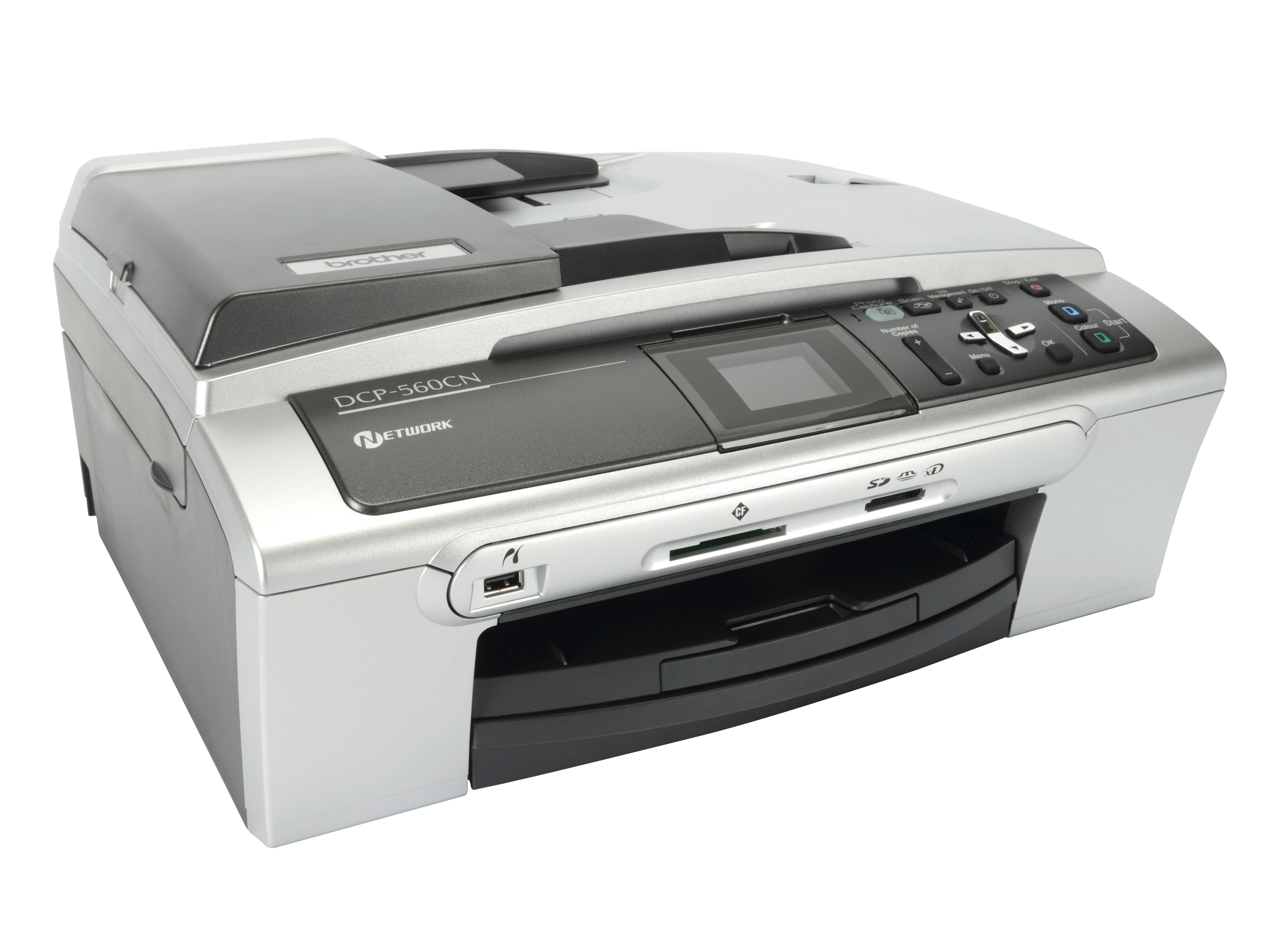TechRadar Verdict
Poor for colour docs, worse for photos
Pros
- +
Easy to use
- +
Card reader
- +
Reasonable ink costs
Cons
- -
Print quality quite poor across the board
- -
Slow photo printing
Why you can trust TechRadar
As you'd expect from a Brother printer, the new DCP-560CN has a distinctly formal look to it, emphasised by the ADF (Auto Document Feeder) fitment above the flatbed scanner.
This is very handy for photocopying multi-page documents and would be even more useful if the printer's all-in-one talents extended to standalone fax use, but that's the one feature that's missing from the line-up.
More office-friendly features include built-in Ethernet as standard, along with the regular USB and PictBridge ports, plus some serious software, including PaperPort SE for document management and OCR.
Proving that it's equally well suited to home as well as office use, the DCP-560CN has a multi-format card reader and colour LCD screen, making short work of printing photos directly from memory cards.
The menu system and control panel are easily navigable in standalone mode, both for printing as well as for mono or colour photocopying.
Document quality
Mono text isn't the sharpest around, and in our tests the finer points of fonts were a little soft around the edges.
Colour graphics and DTP documents were rather worse, especially when printing black text on colour backgrounds, as the black ink tended to run into colour areas very badly, giving a much more smudged appearance than on similar test pages printed on comparative Canon, Epson or HP printers.
The maximum print speeds in draft mode are pretty impressive for document printing but, as you'd expect, they slow down significantly in normal quality mode.
In practice, mono A4 text pages take about 27 seconds to print or photocopy, while colour pages take about 35 seconds to print and around 42 seconds to photocopy - all of which are fairly respectable.
Photo printing, on the other hand, is the Brother's Achilles heel. The four-ink system simply fails to produce a colour space that does justice to most photos. To make matters worse, vivid, saturated colours look washed out and insipid, in contrast to photo-friendly inkjet printers supplied by the three competing companies we've already mentioned.
Similarly, skin tones in photo prints can look pale to the point of being unhealthy.
Photo finish
The reasonable turn of speed in document printing drops to a snail's pace when printing photos. For 10 x 15cm photo prints in both normal and highest quality settings, our test model took 2m 9s and 4m 28s respectively.
For full A4 photos, the times increased to 6m 45s and 12m 03s, making the Brother one of the slowest inkjets around for photo printing.Another inconvenience is the specialist 10 x 15cm paper input tray. While this is nice to have, it sits on top of the regular A4 tray and, unlike the similar arrangement in some of HP's latest printers, it's not deployed automatically.
This means you have to physically remove the paper input tray, push the photo tray into position, then re-insert the tray before printing 10 x 15cm photos.
Worse still, if you forget to manually reverse the whole process afterwards, it's easy to end up printing A4 documents on sheets of 10 x 15cm photo paper left in the printer, with ink being dumped all over the inside of the printer on either side of the 10 x 15cm page.
Ink costs are reasonable, working out at 2.4p per mono A4 page and 7.7p for colour. But all in all, the Brother urgently needs to catch up with the competition.
The TechRadar hive mind. The Megazord. The Voltron. When our powers combine, we become 'TECHRADAR STAFF'. You'll usually see this author name when the entire team has collaborated on a project or an article, whether that's a run-down ranking of our favorite Marvel films, or a round-up of all the coolest things we've collectively seen at annual tech shows like CES and MWC. We are one.
